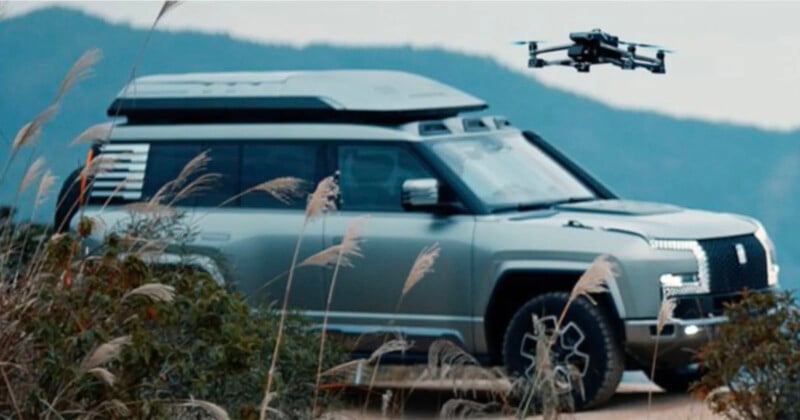
Car manufacturers in China are installing drones in electric vehicles (EVs) to woo customers by allowing them to get cool shots of themselves driving their cars.
The Yangwang U8 ($150,000) comes with a modified version of a DJI Mavic drone (and spare batteries) that is stored in a dedicated roof space that opens up when the driver wishes to deploy it. The U8 is a hybrid SUV and has DJI’s Fly app installed in the infotainment center, according to Inverse.
The driver can capture sweet content by deploying the drone while driving and the DJI’s Return to Home feature will fly itself back to the Yangwang U8’s rooftop dock.
BYD U8 with drone and docker pic.twitter.com/W7yyjaFE8M
— 航拍世家 打手 (@DealsDrone) January 16, 2024
BYD U8 + DJI Mavic 3 + Auto Docker pic.twitter.com/TFyvSQYkoj
— 航拍世家 打手 (@DealsDrone) January 17, 2024
Then, according to Wired, there is the Lynk & Co 06 EM-P compact SUV ($24,000) which recently received an operating system update to allow the internal screen to control a hood-launched DJI drone.
The Chinese military-inspired M-Hero 917 SUV ($112,000 including drone) comes with an S400 drone from GDU Tech which can be launched from the roof. It is operated via voice control from inside the vehicle.
Drones and Cars
EVs in China are not the first vehicles to have a drone installed. In 2022, Swedish electric car maker Polestar made a concept roadster called the Polestar O2 that came with an integrated cinematic camera drone.
However, the Polestar 02 remained a concept car and the Chinese EV market is now actually embracing drones like they are Thunderbirds vehicles.
As Wired notes, most consumer drones can’t exceed 27 miles per hour when flying autonomously and authorities will likely be slow to sanction unmanned aerial vehicles (UAVs) flying around. But the technology is there to use them in cities since drones have obstacle-avoidance modes.
A photographer and/or content creator in the market for an EV might find themselves swayed by an extra camera to use. And if drones are allowed to follow cars, it would make drivers craning their necks to see what’s causing the traffic jam up ahead obsolete when they can just send their drone up instead and monitor the in-car screen.
